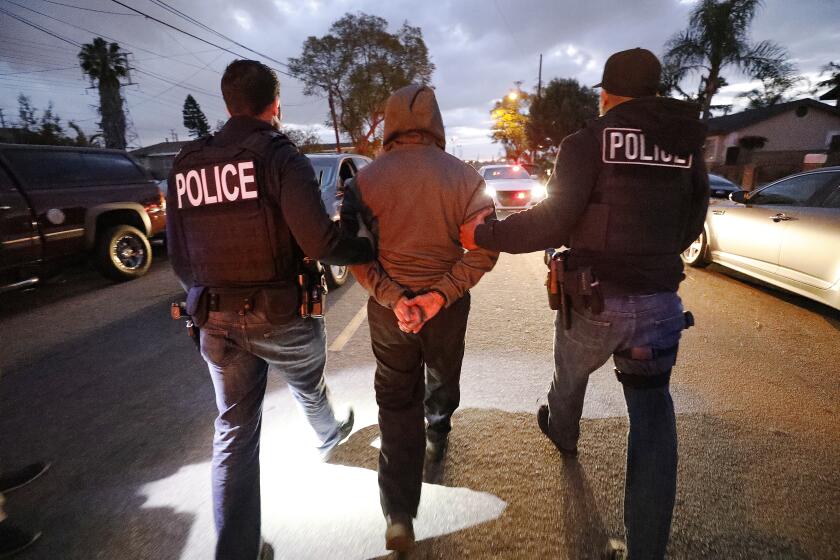Record Low Voter Turnout of 59% Predicted by Eu
- Share via
SACRAMENTO — Secretary of State March Fong Eu predicted Friday a record low turnout of only 59% of registered voters on Election Day, when 12.8 million Californians are eligible to cast their ballots in the general election.
In part, Eu blamed her forecast for Tuesday on “intensely” negative political advertising on television, voter registration efforts that failed to meet advance expectations and pre-election public opinion polls that show many races and issues already “clearly decided.”
The average turnout in a California gubernatorial general election has been 70.2%. The record low of 59.2% occurred in 1942, when Republican Earl Warren ousted Democratic Gov. Culbert Olson.
Put another way, her projected turnout figure represents only 43% of adult Californians who are eligible to register and vote, observed Eugene C. Lee, director of the Institute of Governmental Studies at University of California, Berkeley.
“That is the lowest figure in terms of eligibles that we have had in the last 25 years,” Lee said. “This will be the fourth gubernatorial election in a row in which participation has dropped below 50% of the eligibles. Three out of five adult Californians are staying home.”
Benefit for Republicans?
A low turnout normally is considered a benefit for Republicans, who tend to show greater party loyalty than Democrats, according to some political analysts.
But one observer, I. A. Lewis, director of The Los Angeles Times Poll, said this might not necessarily be the case in California on Election Day because President Reagan is not on the ticket.
“In a high turnout situation recently, the numbers of voters have been swelled by people who are attracted to Reagan,” Lewis said. “In a low turnout situation where Reagan is not a factor, these people might stay home, and therefore it might benefit the Democrats.”
Eu also announced that 12.8 million Californians are registered to vote, second only to the record 13 million signed up for the general election two years ago. Democratic registration has fallen from 52.1% in 1984 to 50.8% now, while Republicans increased their ranks from 36.5% to 38.2%.
New Registrants
Since the primary election in June, Eu said, Republicans picked up 299,830 new members; Democrats gained 267,990. Voters who refused to declare a party affiliation total 8.7% of the electorate, while minor political parties make up the balance--American Independent, 1.2%; Libertarian, 0.4%; Peace and Freedom, 0.3%, and miscellaneous party registrants, 0.3%.
Usually, Eu has been fairly close on her turnout predictions. She fell far short for the June primary, however, when she forecast 47% would go to the polls and only 40% actually did so.
The potential all-time low turnout on Tuesday for a gubernatorial election was described by Eu as “dismal,” but she said that “all factors which I rely on in making forecasts point to a mere 59% turnout.”
Among other things, she included predictions from local elections officials, registration growth since the primary, apparent voter interest in candidates and issues, weather forecasts, the level of requests for absentee ballots and the “degree and nature” of political advertising.
She lamented the failure of registration efforts to net more voters as one reason for her prediction of a miserable turnout. “In addition, the intensely negative advertising going on this season, the estimated 7% to 9% deadwood on the voter rolls and public opinion polls showing many races and propositions clearly decided all combine to lower voter turnout expectations,” Eu said.
More to Read
Get the L.A. Times Politics newsletter
Deeply reported insights into legislation, politics and policy from Sacramento, Washington and beyond. In your inbox twice per week.
You may occasionally receive promotional content from the Los Angeles Times.










